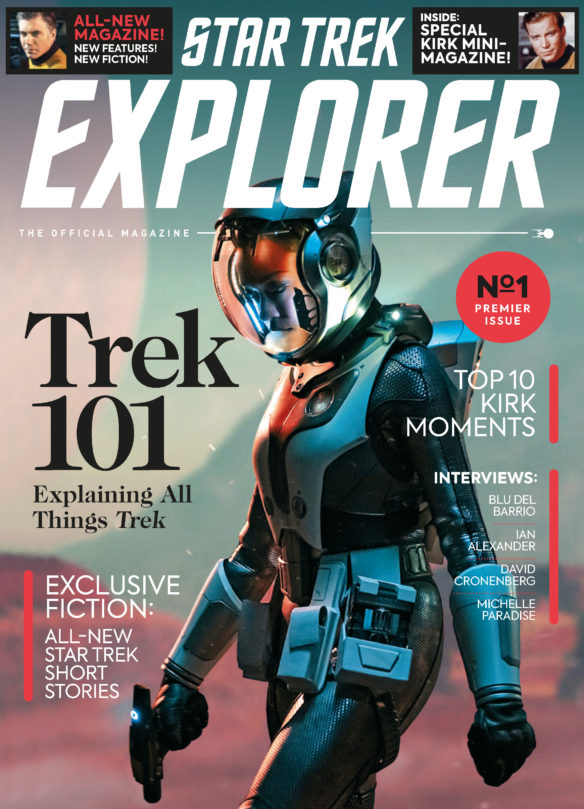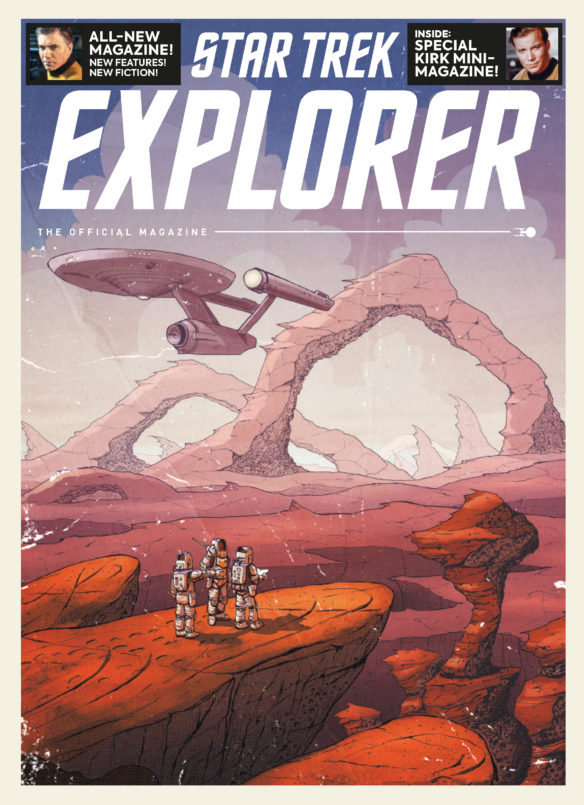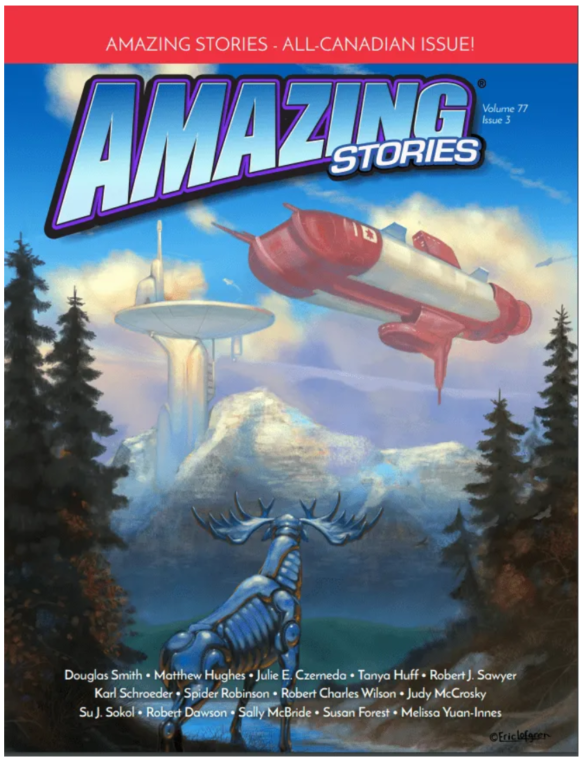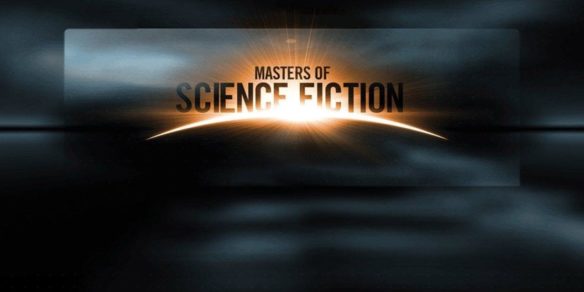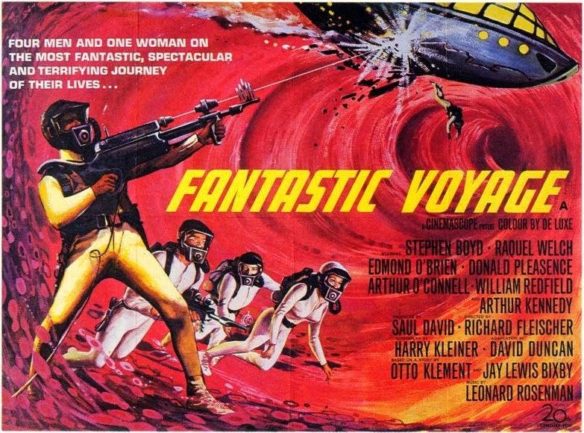(1) GUESSING GAME. Camestros Felapton invites you to take his “Hugo Novel Picture Quiz”.
This year, as the Hugo Awards come closer, I thought I’d combine my current hobby (throwing weird prompts as Midjourney AI) and a guessing game.
I used the names of each of the Hugo Award finalist novels as prompts for the AI. It drew a quartet of pictures for each. Based on the picture, you have to guess which pictures match which novels…
(2) L, D + R. [Item by Martin Morse Wooster.] I listened to this podcast Leonard and Jessie Maltin did with several people associated with Love, Death, and Robots because one episode from the show is up for an Emmy.
Executive producer Tim Miller says he came up with the idea of “reviving Heavy Metal” over a decade ago. He and David Fincher started pitching this idea and Netfix greenlit the series, which is renewed for season 4. Jennifer Yuh Nelson, who directed Kung Fu Panda 2 and Kung Fu Panda 3, says as supervising producer her role is to create the storyboards animators use and “head the quality control department.” Sound editors Brad North and Craig Henigan explain what sound editors do, and we learn that the great sound editor Ben Burtt got part of the voice for Darth Vader from a noisy projector at the University of Southern California film school that is still being used.
Finally, Leonard Maltin said that Alfred Hitchcock once opined that the advantage an animator has over a live action director is “If you don’t like your leading man, you can rip him up.” “Emmy Nominees for Love, Death & Robots” at Maltin on Movies.
(3) THE LIFE AND TIMES OF JOANNA RUSS. A feature of the Middletown (PA) Public Library’s Science Fiction Book Club is its online archive of Science Fiction Author Interviews. The latest is an “Interview about Joanna Russ” conducted with Lisa Yaszek, a Regents’ Professor of Science Fiction Studies at Georgia Tech.
…Damo Mac Choiligh: Did Russ retain her perception of SF as a worthwhile literature into later life? I have always been struck by how she was optimistic about its potential, despite the extent to which it is dominated by writers and fans for whom her feminism was anathema or who simply did not understand it.
[Lisa Yaszek:] I’ve always liked Russ’s optimism as well! Russ spoke often about how she began reading science fiction as a teenager because it promised her that “life could be different!” than the stifling world of midcentury America. And then many of her early critical essays were all about why SF is an important genre. And of course, she continued to write both professional SF and amateur “slash” fiction until her death. If her production slowed down in the 1980s and 1990s, it was largely due to health issues. Having said that, Russ did become increasingly disenchanted with certain factions of the SF community as the 1970s unfolded. When Russ started out in the 1960s, she was actually quite well-received by the largely male/male-identified SF community because she wrote about the possibilities of science fiction as the premiere story form of modernity and her first really successful stories—the Alyx tales—followed the adventures of a strong, smart, successful woman living mostly amongst men. But then Russ began to write essays about the patriarchal limits of SF as it was currently practiced (in essays such as “The Image of Women in Science Fiction” and “Amore Vincent Foeminam!”) and more literarily-experimental stories about all[1]female futures and the women who would go to war with men to preserve them, such as “When It Changed” (1972), The Female Man (1975), and The Two of Them (1978). This led SF authors and editors including Poul Anderson, Judy Del Rey, and Avram Davidson to publicly turn against Russ, dismissing her as a “second rate academic” masquerading as an author. Even Samuel R. Delany—a queer Black experimental SF author who was friends with Russ and who Russ was careful to include in important gender and SF events, such as the 1974 Khatru symposium on “Women and Science Fiction”—was quite critical of her writing at the time. Little wonder then, that Russ gave up her post as a reviewer for the Magazine of Fantasy and Science Fiction in 1980 and began to focus more on writing and publishing in feminist and lesbian venues—even if she never quit writing science fiction itself….
(4) HUGO PICKS. Kristenelle – SFF Reader is a science fiction and fantasy focused booktuber who reads a lot of new releases and does commentary on awards such as the Hugos and Nebulas. Here are her “2022 Hugo Award Predictions”. The whole concept of booktubers fascinates me, I wish I had time to keep up with them.
(5) MENSA. Eve Peyser chronicles “My Week With America’s Smartest* People” for New York Magazine.
Despite its history and Loftus’s conclusions, I did not get the sense that Mensa is an unhealthy place to find community. Many of its members think of themselves as outsiders and feel like Mensa is a place where they can be themselves and connect with people who understand and appreciate them. It’s a place where they can find other folks who love to play Set or who have encyclopedic knowledge of minute Disney trivia. This isn’t to say that there aren’t toxic subsections of Mensa, because there are, but that’s true of any group that runs tens of thousands of members deep. And in an era when the internet and the pandemic have scrambled our sense of community and alienation reigns supreme, that’s no small thing.
(6) ARRAY OF TEMPESTS. Ars Technica tells why “We’re loving the lavish epic visuals in the new LOTR: Rings of Power trailer”.
…This latest trailer opens with a voiceover by Galadriel, telling us that her brother gave his life “hunting the enemy.” She takes up the cause in his stead. She asks for others to stand with her, as we see shots of several central characters who, one presumes, will become her comrades in arms. Or perhaps they will decline the offer. That seems to be the case with Halbrand, who insists, “I am not the hero you seek,” suggesting a dark secret in his past. “Whatever you did, be free of it,” Galadriel tells him.
Galadriel seems to be emerging as the most major protagonist, but we also get new footage of several other characters scattered throughout Middle-earth, including dwarves and hobbits. The latter, while humble, do have their strengths. “One thing we can so better than any creature in all Middle-earth—we stay true to each other, with our hearts even bigger than our feet,” Nori’s dad, Largo Brandyfoot (Dylan Smith), says. It looks like different kinds of struggles and battles will be waged on many different fronts, as befitting a sweeping epic series of this magnitude….
(7) NEVER? WELL, HARDLY EVER. Tom Mead chooses the “10 Most Puzzling Impossible Crime Mysteries” at Publishers Weekly.
… “Impossible crime” and “locked-room mystery” are two analogous terms referring to mysteries in which how a crime was committed is equally important as who committed it. Crimes which are seemingly impossible, which appear to have been committed in defiance of both physics and logic. As such, these mysteries are often tinged with a hint of the surreal, the sinister, and the uncanny. However—and this is particularly important—the crime always, always has a rational explanation. By its nature, this is a fiendish subgenre, but when done right it’s also one of the most satisfying for both writers and readers. The puzzle and the atmosphere are perfectly intertwined; all the clues are there, but they are so ingeniously disguised as to make it nigh-on impossible for the reader to suss out what is going on….
At the top of his list:
1. The Three Coffins/The Hollow Man by John Dickson Carr
Whenever I am asked what is my favorite locked-room mystery or impossible crime story, this is always my answer. The murder of Professor Charles Grimaud by the mysterious “hollow man” who vanishes without trace is a perfect locked-room problem. Meanwhile, the killing of illusionist Pierre Fley in a street carpeted with unmarked snow is an archetypal example of the popular impossible crime variant, the no-footprints puzzle.
As well as one of the most famous examples of the subgenre, this novel remains an indisputable masterpiece. Not only is it a tour-de-force of plotting, prose, and atmosphere, it also happens to contain within it one of the definitive critical overviews of the genre itself: the famous “locked-room lecture,” a perfect piece of meta-fiction in which Dr. Gideon Fell examines the very nature of the impossible crime. It’s a treatise which probes just about every category of impossible crime, providing numerous examples of methods by which they could be achieved. But is the solution to these two murders lurking somewhere in those scant few pages? Or is the locked-room lecture itself just a red herring?
When I first read this book, the brilliance of the solution left me giddy. Reading it again today, it has lost none of its impact. This book is one of the many reasons that John Dickson Carr remains (to borrow a phrase from Agatha Christie) the “supreme conjurer, the King of the Art of Misdirection.”
(8) MEDIA BIRTHDAY.
1966 – [By Cat Eldridge.] Fifty-six years ago, Fantastic Voyage premiered. It would the next year be nominated for a Hugo at NyCon 3 but Star Trek’s “The Menagerie” won.
It was directed by Richard Fleischer and produced by Saul David. Fleischer had been responsible for the earlier 20,000 Leagues Under the Sea and David had produced Our Man Flint. (It is definitely genre.) The screenplay was by Harry Klein off an adaptation by David Duncan (yes, our David Duncan) of the story by Jerome Bixby and Otto Klement which I assume is “Small War” though nowhere is that stated.
The film starred Stephen Boyd, Raquel Welch, Edmond O’Brien, Donald Pleasence, and Arthur Kennedy. Of course it has Welch in it , there had to be one sexy female on the crew, didn’t there?
Klement and Kleiner claimed to the studio that it would be “the most expensive science-fiction film ever made”, a odd thing I think to say to sell anything to a studio. It cost five million dollars which certainly was expensive but not that expensive. It didn’t do that well at the box office returning just twelve million.
I’ll quote but one review from the time, that of Variety: “Fantastic Voyage is just that. The lavish production, boasting some brilliant special effects and superior creative efforts, is an entertaining, enlightening excursion through inner space – the body of a man.”
Asimov wrote the novelization which readers thought the film was based on as it came out well before the film premiered. He was displeased with that take so he wrote another take, Fantastic Voyage II: Destination Brain, and a third novel would follow written not by him but by Kevin J. Anderson, Fantastic Voyage: Microcosm.
It would spawn a short-lived animated series, Fantastic Voyage, thirteen episodes to be precise, and a Fantastic Voyage comic book, based on the series, published by Gold Key which lasted an amazingly short two issues.
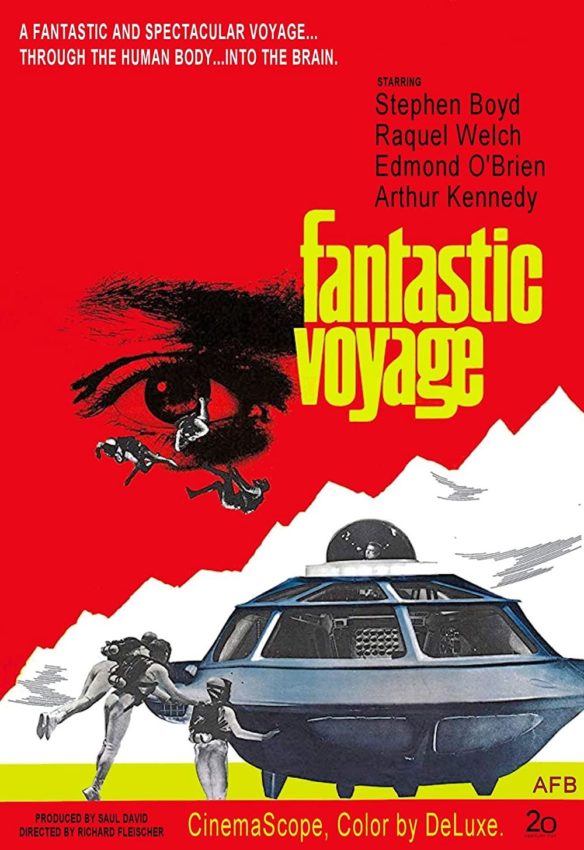
(9) TODAY’S BIRTHDAYS.
[Compiled by Cat Eldridge.]
- Born August 24, 1899 — Gaylord Du Bois. He was a writer of comic book stories and comic strips, as well as Big Little Books. He wrote Tarzan for Dell Comics and Gold Key Comics from the Forties to early Seventies.) He was one of the writers for Space Family Robinson which was the basis for the Lost in Space series. (Died 1993.)
- Born August 24, 1899 — Jorge Luis Borges. I’m reasonably sure my first encounter with him was at University with the assignment of The Library of Babel. I’m not deeply read in him but I loved The Book of Imaginary Beings, and though not genre, recommend The Last Interview and Other Conversations for an excellent look at him as a writer. (Died 1986.)
- Born August 24, 1915 — Alice Sheldon. Alice Sheldon who wrote as James Tiptree Jr. was one of our most brilliant short story writers ever. She only wrote two novels, Up the Walls of the World and Brightness Falls from the Air but they too are worth reading even if critics weren’t pleased by them. (Died 1987.)
- Born August 24, 1932 — William Morgan Shepard. Best remembered I think as Blank Reg in Max Headroom: 20 Minutes into the Future. Genre wise I’d add him being the most believable Klingon Prison Warden In Star Trek VI: The Undiscovered Country, Merrit in The Prestige (nominated for a Hugo at Nippon 2007),the rather scary Soul Hunter on Babylon 5 and a Vulcan Science Minister in Star Trek. (Died 2019.)
- Born August 24, 1934 — Kenny Baker. Certainly his portrayal of R2-D2 in the Star Wars franchise is what he’s best known for but he’s also been in Circus of Horrors, Wombling Free, Prince Caspian and the Voyage of the Dawn Treader series, The Elephant Man, Sleeping Beauty, Time Bandits, Willow, Flash Gordon and Labyrinth. Personally I think his best role was as Fidgit in Time Bandits. (Died 2016.)
- Born August 24, 1936 — A. S. Byatt, 86. Author of three genre novels, two of which I’m familiar with, Possession: A Romance which became a rather decent film, and the Mythopoeic Fantasy Award for Adult Literature-winning The Djinn in the Nightingale’s Eye, and one I’ve never heard of, Ragnarok: The End of the Gods, but I’m actually much, much more fond of her short fiction. I’d start with the Little Black Book of Stories and Angels & Insects collections.
- Born August 24, 1951 — Tony Amendola, 71. Prolly best known for being the Jaffa master Bra’tac on Stargate SG-1. He’s also had recurring roles as Edouard Kagame of Liber8 on Continuum and on Once Upon a Time as Pinocchio’s creator, Geppetto. His list of one-off genre appearances is extensive and includes Angel, Charmed, Lois & Clark, Space: Above and Beyond, the Crusade spin-off of Babylon 5, X Files, Voyager, Dirk Gently’s Holistic Detective Agency, Terminator: The Sarah Connor Chronicles, Alias, She-Wolf of London and Kindred: The Embraced. He’s also been a voice actor in gaming with roles in such games as World of Warcraft: Warlords of Draenor, World of Warcraft: Legion and World of Final Fantasy.
- Born August 24, 1957 — Stephen Fry, 65. He’s Gordon Deitrich in V for Vendetta, and he’s the Master of Laketown in The Hobbit franchise. His best role is as Mycroft Holmes in Sherlock Holmes: A Game of Shadows (I absolutely adore both films as I noted in my essay on them) though he made an interesting narrator in the film version of The Hitchhiker’s Guide to the Galaxy, and not to be overlooked is that he’s also the narrator for all seven of the Potter novels for the UK audiobook recordings.
- Born August 24, 1958 — Lisa A. Barnett. Wife of Melissa Scott. Some of her works were co-authored with her: The Armor of Light, Point of Hopes: A Novel of Astreiant and Point of Dreams: A Novel of Astreiant. They wrote one short story, “The Carmen Miranda Gambit”. (Died 2006.)
(10) BOOM TIMES. The New York Times takes readers “Inside the Making of New York City’s Bizarre Nuclear War P.S.A.” This Bonestell art is not part of it…

The video opens gauzily on an empty New York City streetscape, with sirens echoing in the distance, as a woman dressed in black strolls in with some hypothetically catastrophic news.
“So there’s been a nuclear attack,” she says nonchalantly. “Don’t ask me how or why, just know that the big one has hit.”
The 90-second public service announcement, which instructed New Yorkers about what to do during a nuclear attack, was released by the city’s Department of Emergency Management in July.
It attracted attention: While most of the videos on the department’s YouTube page have recorded fewer than 1,000 views, at last count the nuclear preparedness video had been seen more than 857,000 times.
It also drew immediate and widespread derision, much of it centered on an underlying question: What were they thinking?
… Many Americans are concerned about the prospect of a nuclear attack. Nearly 70 percent of residents said they were “worried the invasion of Ukraine is going to lead to nuclear war,” according to a survey in March by the American Psychological Association.
Still, some questioned whether the city should have prioritized the nuclear preparedness video at a time when emergency officials are grappling with more imminent threats, like extreme heat and catastrophic flooding, and the city is dealing with the monkeypox health crisis.
Mr. Harvin, the former city official, said that emergency management professionals traditionally focus on events that are more likely to occur, including flash floods or mass shootings. New York City has recently experienced both….
(11) ARTEMIS ROCKET. MSN.com runs the AP’s “EXPLAINER: NASA tests new moon rocket, 50 years after Apollo”.
Years late and billions over budget, NASA’s new moon rocket makes its debut next week in a high-stakes test flight before astronauts get on top.
The 322-foot (98-meter) rocket will attempt to send an empty crew capsule into a far-flung lunar orbit, 50 years after NASA’s famed Apollo moonshots.
If all goes well, astronauts could strap in as soon as 2024 for a lap around the moon, with NASA aiming to land two people on the lunar surface by the end of 2025.
Liftoff is set for Monday morning from NASA’s Kennedy Space Center.
The six-week test flight is risky and could be cut short if something fails, NASA officials warn.
“We’re going to stress it and test it. We’re going make it do things that we would never do with a crew on it in order to try to make it as safe as possible,” NASA Administrator Bill Nelson told The Associated Press on Wednesday.
(12) YOUR SPITTING IMAGE. Gizmodo discusses a study that tells why “You and Your Doppelganger Might Have More in Common Than Just Looks”.
It turns out that unrelated doppelgangers may have quite a bit in common beyond just twin faces. New research suggests that lookalikes with incredibly similar faces tend to share many genetic variants—variants that don’t just seem to shape their appearance but general aspects of their life. At the same time, other important influences, such as the microbiome, appear to contribute little to their symmetry.
Study author Manel Esteller, a geneticist and director of the Josep Carreras Leukemia Research Institute (IJC) in Barcelona, Spain, is interested in what makes people the way they are. In 2005, he and his colleagues published research showing that identical twins weren’t as identical as they appear at first glance. While they had the same basic genetic patterns, they differed noticeably in their epigenetics: changes in how our genes express themselves, which are caused by environmental or behavioral factors, such as smoking or age.
In their new research, published Tuesday in Cell Reports, Esteller’s team wanted to look at the other side of the coin—people who look so similar that they could be twins but aren’t actually related…
(13) WOODEN IT BE ROMANTIC. Disney+ dropped their trailer for Pinocchio today (which is not Guillermo Del Toro’s Pinocchio–the Disney version is directed by Robert Zemeckis.)
(14) VIDEO OF THE DAY. [Item by Martin Morse Wooster.] Ryan George, in this sketch that dropped four days ago, wonders what the billionaires would do when the apocalypse happens!
[Thanks to Martin Morse Wooster, JJ, John King Tarpinian, Andrew Porter, Chris Barkley, Michael Toman, Cat Eldridge, and Mike Kennedy for some of these stories. Title credit belongs to File 770 contributing editor of the day Thomas the Red.]

